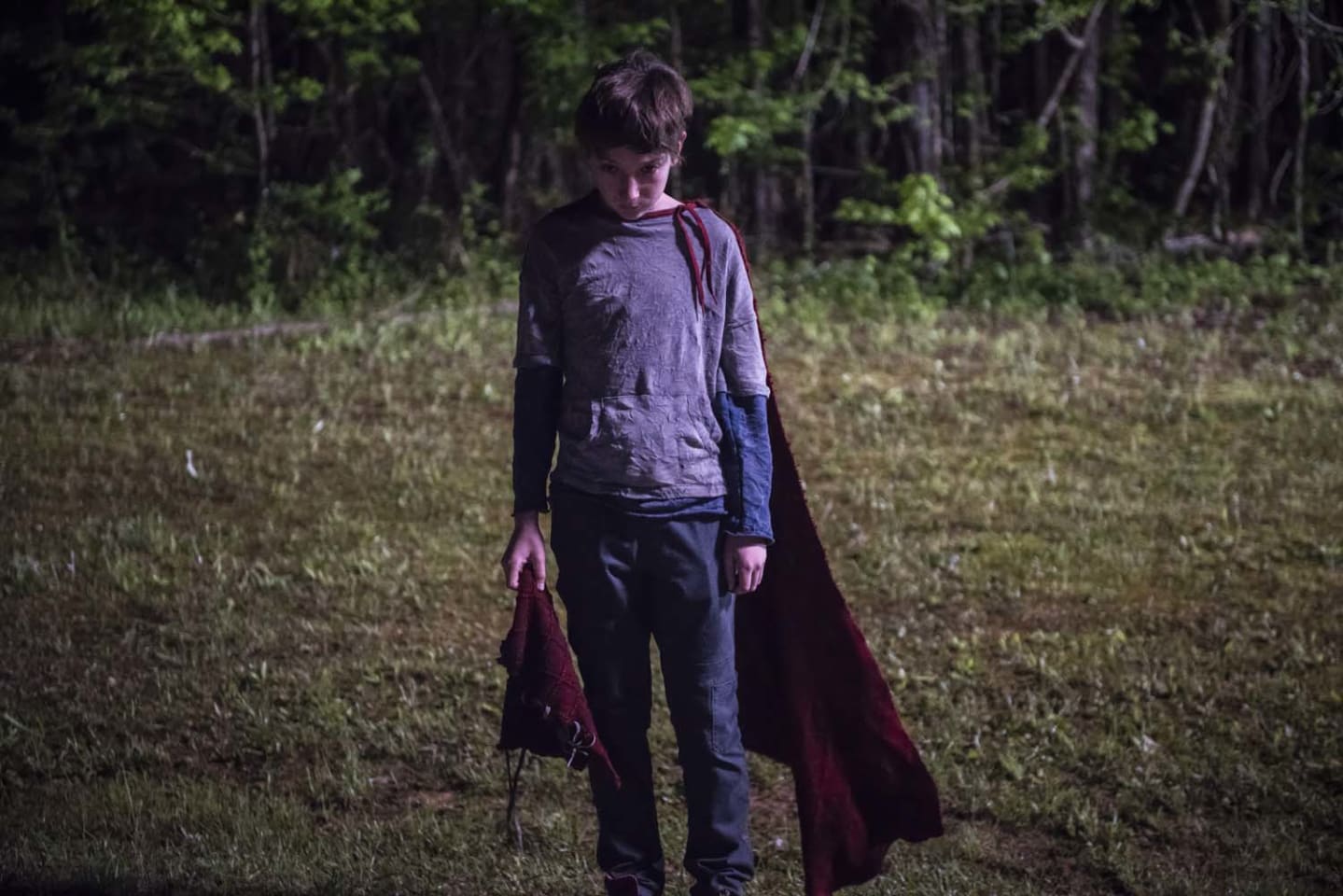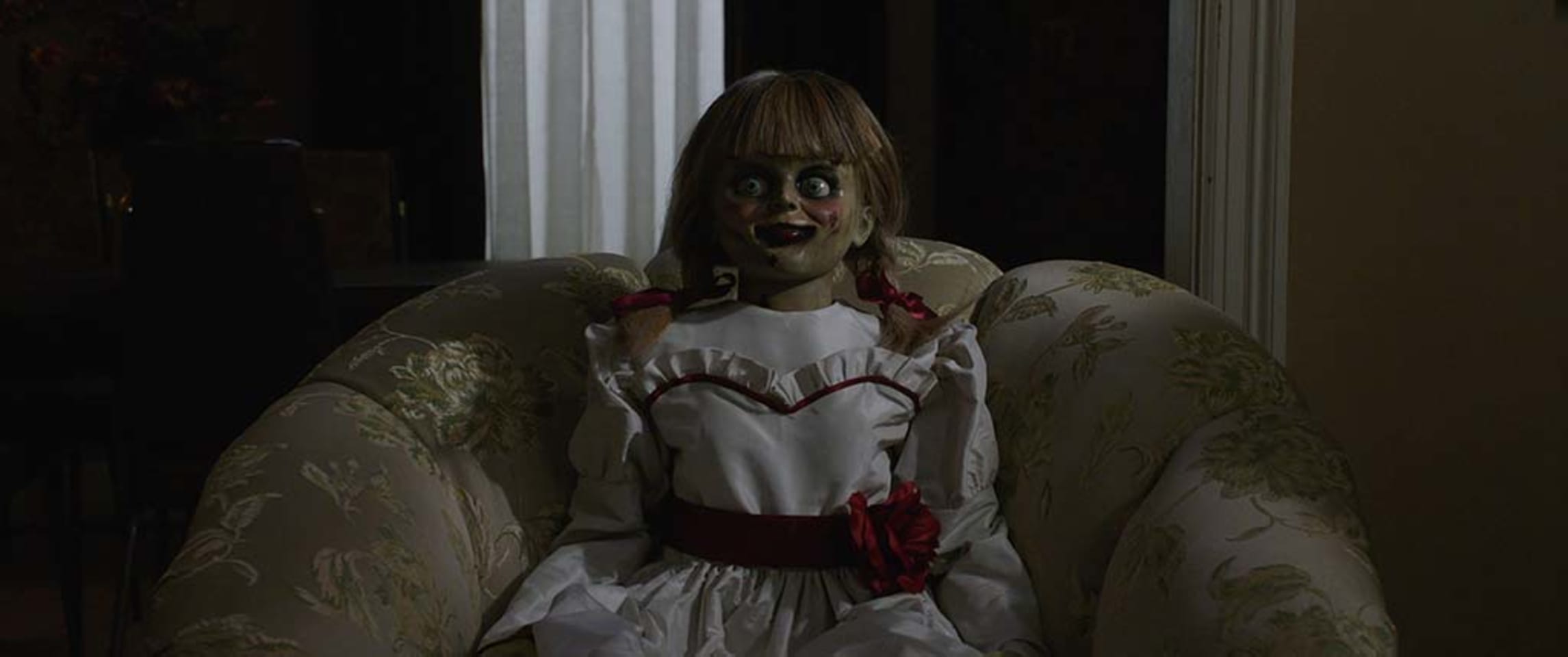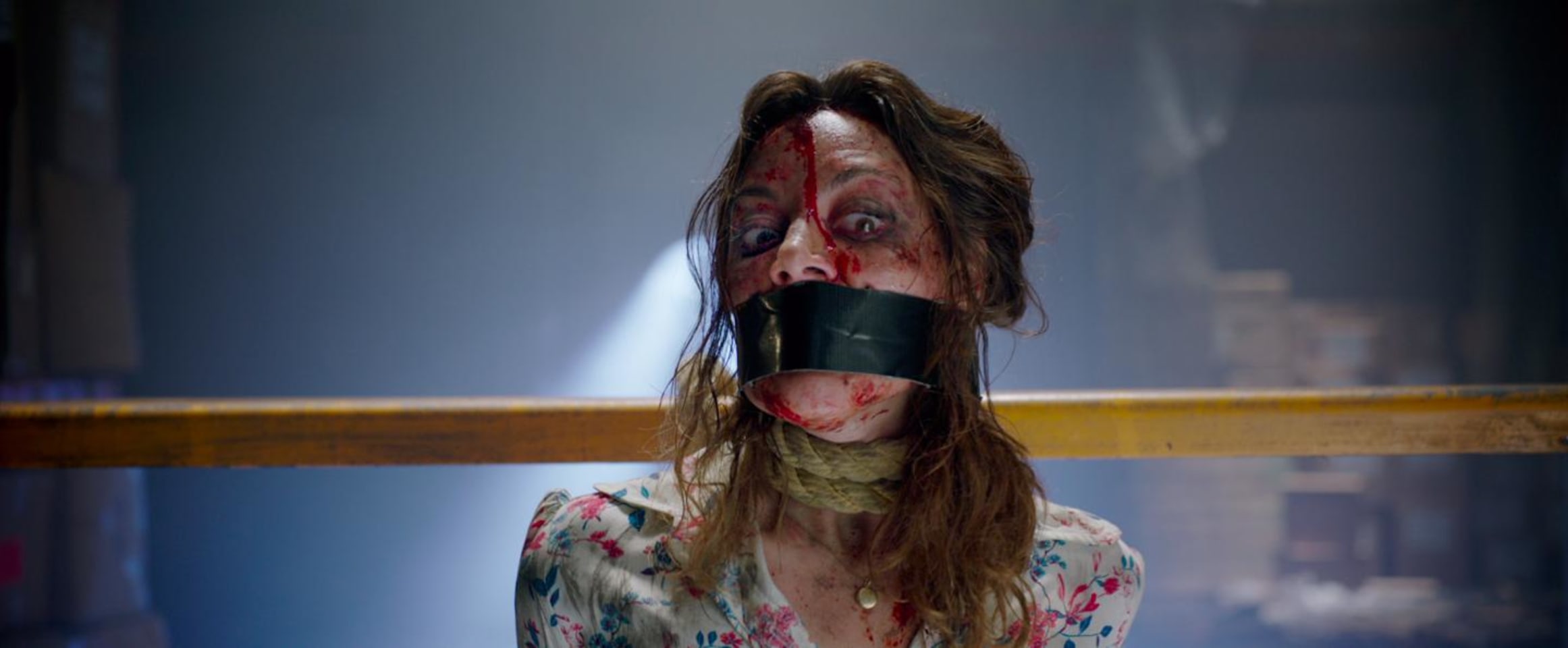Sometimes, in my opinion, the best way to start writing is by contextualizing an article’s prompt. Days ago, Atom Insider’s Alisha Grauso counted a bountiful influx of horror titles overtaking this summer’s blockbuster season. The conversational question arose: “Why are studios putting such an emphasis on horror in a non-traditional season?” Where have all the tentpole comedies and action franchises gone? When did Annabelle and Chucky snatch the throne? And, again, most curiously: “Why is horror so popular this summer?”
The answer, logically, may not surprise you.
Horror Turns A Profit, Even On A Small Budget

Horror cinema translates into boo koo box office buckos. No matter how many times you read some ill-begotten headline about how, say, the horror genre whimpered death cries until a movie like It: Chapter One came along, monetary grosses argue otherwise. Aside from launching into 5,000 words about how horror has never been dead (just evolving and adapting), the simplest answer here is that horror fairly consistently packs theaters without requiring hefty investments.
This summer, listing theatrical releases (wide or limited), there are twelve big-ticket screamers hitting screens. Two in May (Ma, Brightburn), four in June (The Dead Don’t Die, Child’s Play, Them That Follow, Annabelle Comes Home), three more in July (Midsommar, Crawl, The Boy 2), two in August (47 Meters Down: Uncaged, Scary Stories To Tell In The Dark), and we’ll count It: Chapter 2 since it arrives a week after Labor Day. Granted, this tally doesn’t acknowledge straight-to-VOD releases, which – being a horror faithful – I can assure you are plentiful.
Admittedly, twelve big-guns does seem like a mighty leap from 2018’s six “noteworthy” summertime horror releases. Jason Statham battled a prehistoric shark in The Meg, Slender Man hit the urban legend demographic, Hereditary stunned, The First Purge got loud and political, plus Upgrade went all Her meets John Wick while Unfriended: Dark Web cyberstalked victims. A slighter output, but let’s evaluate the numbers.
The Meg caught flack from critics for being a bloated predator lacking in bite, but Jon Turteltaub’s aquatic event thriller grossed $145m domestic (another $385m international). The First Purge continued Blumhouse’s tradition of making America violent again, grossing $137m worldwide on a $13m budget. A24’s Hereditary opened to a stunning $13.5 million on nothing but grassroots indie campaigning. Ari Aster’s lucrative success proved that audiences would turn up for horror films based on groundswell word of mouth alone. Toni Collette’s performance deserves every bit of A24’s milestone $79m worldwide.
Based on the above, horror’s financial upside isn’t to be understated – but what happens when a film “fails?” Slender Man, an inarguable disaster from quality to marketing to buried fate, still grossed $52m worldwide on a $10m budget. Regarded by critics and viewers as chopped-up, studio-interfered garbage (and “Crunchy Woodland Sound Effects: The Movie” by me) Sony’s critical misfire still turned a profit. BH Tilt hoped for similar returns on Upgrade ($14m worldwide) and Unfriended: Dark Web ($15m worldwide), but then again, their marketing efforts were not as far-reaching (or presumably expensive) as Sony’s teenage-terror push. We know Blumhouse operates on tighter budgets, so what about their even less promoted BH Tilt offshoot? Coupled with streaming rentals and physical options, these kinds of numbers might be BH Tilt’s aim.
Yet This Summer’s Horror Movies Aren’t Content With Small Returns

But a movie like Annabelle Comes Home isn’t chasing a meager $15m. As part of James Wan’s ‘Conjurverse,” Warner Brothers is hoping for box office numbers reflecting other spinoffs including Annabelle ($257m worldwide), The Nun ($366m worldwide), and most recently – not even marketed as a ‘Conjurverse’ entry – The Curse Of La Llorona, which passed $100m. Why the dip for Michael Chaves’ Mexican-influenced tale of an international boogeywoman? Warner Brothers’ odd decision to leave ‘Conjurverse’ ties unannounced, a lukewarm reception out of South by Southwest Film Festival, and eventual abandonment of hardcore marketing tactics. Good thing The Curse of La Llorona only required a $9m budget! Cash money!
While we’re talking about SXSW, let’s highlight all three major horror premieres. The Curse Of La Llorona clocks in at $118m worldwide, Paramount’s Pet Sematary remake so far notched $110m worldwide, and Jordan Peele’s Us sits at $254m worldwide. It’s no secret that studios are continually chasing box office records in terms of horror, whether it be The Conjuring or The Nun smashing existing franchise ceilings. Every producer craves that Get Out money ($255m worldwide), or that It money ($700m worldwide), or that A Quiet Place money ($341m worldwide). Maybe Pet Sematary’s $100m seems paltry in comparison, but that’s on a $20m budget. Before VOD profits, streaming licenses, physical release – you catch my drift here.
Horror is a booming business rooted in faithful genre appreciators who show support with open wallets (just peek at horror convention prices these days). An easy route of pursuit when compared to other high-concept summer corpses, like The Happytime Murders, that wash up on the box office beach, only grossing $27m worldwide on a $40m budget. Or another 2018 box office dud, Johnny Knoxville’s Action Point ($5m gross vs. $19m budget). Comedies like Blockers ($90m worldwide), Tag ($78m worldwide), and Life Of The Party ($65m worldwide) all tracked just fine with budgets in the $20m-$40m range, but none topped $100m plateaus. Horror, however, seems to be soaring past such hurdles. If you’re a bettin’ man or woman, where do the odds point? (Well, aside from superhero entities. We know Avengers: Endgame passed the $2 billion mark. There will be no horror vs. comic book adaptations debate here. America’s Ass demands top dollar.)
Is There Such A Thing As Too Much Horror?

Now, as 2019’s “popcorn season” revs its chainsaw engine, we’re bombarded by multiple horror cinema options. A natural reaction based on historical productivity. Here’s another question worth posing – will we get too much tentpole studio horror at once?
As noted previously, there will be consecutive summer weeks in 2019 where new release horror films are available. Does the average moviegoer attend one film a week? One film every other week? One a month? Will horror fans without the pocket change or freedom be able to see every genre offering desired, or will they be forced to pick and choose between releases? These are real questions as theaters hike ticket and concession prices higher and higher. Choices may have to be made, resulting in passing on lesser-distributed indies like Them That Follow whereas other summer slates with less competition may have yielded more forgiving returns.
The reality is horror proves to be one of the most financially stable cinematic spaces as of now. Smaller budgets, maximized rewards. Many of your favorite filmmakers started in horror since it takes visionary creators to pull off victories worth $250m – but there are also the unarguable constants. Horror flicks are date movies. People love an adrenaline rush. Horror can always be counted on for a branded type of theater experience, and that’s proven to be a bankable formula worth financier attention. I just hope, in a crowded summer with so many horror releases, the avalanche of offerings doesn’t dilute earnings and cause an immediate panic that, once again, incorrectly pins horror six-feet-under.
*All box office totals researched using Box Office Mojo and rounded up/down.













